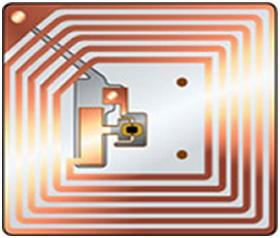
 Data Structure
Data Structure Networking
Networking RDBMS
RDBMS Operating System
Operating System Java
Java MS Excel
MS Excel iOS
iOS HTML
HTML CSS
CSS Android
Android Python
Python C Programming
C Programming C++
C++ C#
C# MongoDB
MongoDB MySQL
MySQL Javascript
Javascript PHP
PHP
- Selected Reading
- UPSC IAS Exams Notes
- Developer's Best Practices
- Questions and Answers
- Effective Resume Writing
- HR Interview Questions
- Computer Glossary
- Who is Who
What is RFID?
The full form of RFID is Radio-frequency identification. It is the wireless non-contact use of radio-frequency electromagnetic fields to transfer data, for the purposes of automatically identifying and tracking tags attached to objects.
RFID transmits information from RFID tags to RFID readers. As in, the data is communicated with a system that contains RFID tags, an antenna, an RFID reader, and a transceiver.
RFID is one method of automatic identification and data capture (AIDC). This tag can read from up to several feet away and doesn’t require to be within direct line-of-sight of the reader to be tracked.
Below is an example diagram of RFID −

Working procedure
The working procedure of RFID is as follows −
In the active RFID system, the reader sends signals to tags using an antenna.
The tags receive this information and resend this along with the information in its memory.
Readers receive this signal and transmit to the processor for further processing.
Like barcode technology, RFID recognizes locations and identification identifies tagged items.
It uses low-power radio frequencies to collect and store data. The transceiver reads radio frequencies and transmits to an RFID tag.
The information is then transmitted from a computer chip (embedded in the tag) and broadcasted to the RFID reader.
Uses
The uses of RFID are as follows −
RFID technology is helpful to track products which are similar to using barcodes for product identification.
Tags are also used for electronic payment for transportation like smart tag and other payment systems, such as credit cards and smart cards.
RFID also has several medical uses including tracking of new-borns in hospitals, storing information on surgical patients and procedures, and tracking medical equipment.
RFID Tags
A RFID system uses labels attached to the objects that need to be identified.
RFID tags are comprised of three parts −
a microchip
an antenna
a substrate
Given below is the diagram of RFID Tag which is a non-volatile memory.

Types of RFID Tags
There are two types of RFID tags, which are as follows −
Passive tags − These are powered by energy from the interrogating radio waves generated by RFID readers.
Active tags − These are powered by a battery and so can be read at a greater range of up to hundreds of meters.
RFID tags are used in many industries. For instance, an RFID tag attached to an automobile or RFID-tagged pharmaceuticals can be used to track the progress of the product.
Advantages
The advantages of RFID are as follows −
Efficiency
Durability
RFID provides more security than barcodes.
RFID tags can be read from greater distances.
RFID need not be positioned in a line of sight with the scanner.
The faster rate of RFID is more than barcodes
They can work within much greater distances.
RFID tags are reusable
RFID tags are protected by a plastic cover.
Disadvantages
The disadvantages of RFID are as follows −
The materials used in RFID like metal & liquid can impact signal
Sometimes When compared to barcode scanner the RFID is not accurate or reliable
The Cost of RFID readers are 10x more expensive than barcode readers
Implementation of RFID is difficult and it is time consuming
RFID involves assembling and inserting a computerized chip which is more expensive.
RFID readers face difficulties for picking up information when passing through metal or liquid.
RFID still has two separate chips which cannot be read by the same machine.

